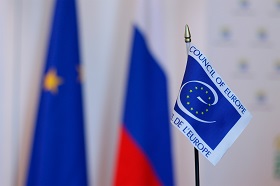The notion of “society” was elaborated on in the 19th century. It was coined to grasp the ongoing changes: the Industrial Revolution, the proliferation of capitalism, the rise of the nation-state, urbanisation, the emergence of mass social movements etc. It was conceived both as the object of research (e.g. Durkheim, 2014) and as a concept to describe the mode of human interactions (e.g. Tönnies, 2012). Different social scientists had diverging conceptualizations of society.
In this text, we will use both the concept of “gesellschaft”, which is marked by impersonal relations, the industrial economy of capitalism, the nation-state, urbanization and rational bureaucratic apparatus, and an entity in a Durkheimean (sui generis) and Parsonsian way. In order to identify the criteria we could employ to evaluate whether a European society exists, we would use the AGIL paradigm suggested by Parsons (2013) as well as some other criteria discussed by Shils (1972). The AGIL paradigm suggests that society striving to survive should have institutions performing four functions (Ritzer, Smart (2000)): adaptation (performed by economy), goal-attainment (performed by political sphere), latency (performed by family, education system and cultural system) and integration (performed by law and informal norms). Shills (1972) states that society should, among other things, have its territory, borders and central authorities that are superior to any other centres of power within the given territory, as well as a shared identity.
Does European society exist?
Adaptation (a single economic system)
The EU has a complicated and a relatively centralized economy. All EU members are part of the European Single Market which seeks to guarantee the four freedoms (free movement of goods, capital, cervices and persons). The latter freedom is, however, limited. Its narrower interpretation addresses the physical aspect of such mobility and does not prevent states from not letting immigrants embed into its welfare system or granting access to public services [1] (Recchi, Favel, 2019; Barbulescu, Favell, 2020), which restricts mobility of labour and prevents intra-EU labour immigrants from perceiving it as a single seamless space. Additionally, only 19 of the 27 member states are currently members of the Eurozone. This complicates intra-EU trade due to the higher transaction costs, complicating the perception of the European economy as a seamless domain. Finally, the EU has a limited convergence in its fiscal policies which are administered by member-states.
Goal-attainment (political sphere) [2]
The EU design suggests the existence of European institutions with certain competences in which they may be superior to national and subnational actors (the most notable among them are the European Commission, the European Parliament, the European Council and the Council of Ministers). Together, they can inform the way for the further development of the EU as well as design, implement and assess policies and adopt laws. However, it is difficult to claim that these institutions have more power than the member-states. First, there is a limited scope of competences and while there exists the subsidiarity principle that restrains the competences of European institutions as well as delegates decision-making to the bottom levels (states, regions etc.) unless the issue can only be solved on a higher level. Second, European institutions have less resources to enforce its decisions as compared to the resources of individual states (compare the outcome of the 2017-2018 Catalan crisis and the course of Polish rule of law crisis). Third, the way the European Council and the Council of the EU function enables the member states to shape their work. Therefore, it is impossible to claim that the EU has more power than the member states.
It would be pertinent to place the discussion of the European public sphere within this criterion. According to Bader (2008), neither the EU nor individual states have a single seamless public sphere. Rather, they encompass a multitude of different public spheres: regional, professional, community-based, related with NGOs etc. EU public spheres are reported to be more decentralized and fragmented (compared with spheres within nation-states) as they encompass the spheres of the member states as well as the spheres related to the functioning of EU institutions. Finally, given the presence of the 24 official languages of the EU, they exist amid the circumstances of a strong linguistic decentralisation, which provides for new spheres based on the languages used.
Latency (education, further socializing institutions and culture)
Primary pre-school socialisation is usually undertaken by parents and/or kindergartens. The primary and secondary education in the EU is diverse and varies across different member-states who apart from education purposes use it for national identity reinforcement (Reed-Danahay, 2020). The Bologna process, however, contributes to a convergence in the higher education (Recchi, Favel, 2019). It is difficult to evaluate if there is a single European culture due to the very diverse consumption patterns that are dependent on many variables. While there is no single European church, a certain convergence (secularization) can be identified in the religious field (Ibid.).
Integration (law and order, social norms, values and practices)
Harmonizing local laws with the EU legislation is one of the requirements for a candidate state to join the EU. European institutions can issue legal acts superior to the national legislation; however, their enforcement is problematic as it was already mentioned. The EU acts mostly address general issues (such as legal regulation, economic (monetary) policies, rule of law, human rights etc.) On the level of everyday practices, they are less ubiquitous than the acts issued by legislative bodies of individual member states. The EU is comprised of countries with diverse practices and social norms (Haerpаer et all, 2017-2020 [3]; Hofstede, 2009). The intra-EU variance may exceed it in the Anglophone states which has a comparable population.
Borders and territory
As suggested by Recchi and Favel (2019), the EU has external borders, which are at the same time regarded as borders of each of the member states while remaining an important issue for the contemporary Europe (Geddes, Scholten, 2019). At the same time, the EU has a territory which consists of the territories of its member-states.
Identity
Based on the so-called Moreno’s (2006) question, it is possible to identify a few facets of the European identity: exclusive (when a person names oneself as a European only), strong (when European identity is primary while national identity is secondary and weak (when European identity is secondary while national identity is primary) (Recchi, Favel, 2019). Although data suggests an increase of the weak identity over the last decade, this may be explained not by a greater attachment to Europe but rather as a result of globalisation, when a secondary European identity is a particular case of a supraregional, or cosmopolitan, identity. Therefore, the first two forms of identity seem to become less common for the population throughout the course of the last 30 years. It is thus possible to conclude that no strong (and or exclusive) European identity is currently shared by a majority of Europeans; yet, the increase of the weak identity might change the status quo in the future.
Taking the analysed criteria into consideration, it is possible to concede that a European society does not exist. Although Europe has a single market and is capable of pursuing a consistent monetary policy, having political institutions on legislation and development, there are many discontinuities—instead of more or less seamless totality—both in the mobility of labour and in terms of including citizens from different member states into each other’s welfare systems, something coupled with ruptures produced by linguistic differentiation. Additionally, the lack of a strong European identity among the majority of Europeans testifies against the existence of the European society.
Can a European society exist?
A spectre of a nation-state, which is traditionally strongly related with the notion of society, was implicitly present in the second section essential for the emergence of Society (“Gesellchaft”) as the former assured the existence of capitalism and market economy (Polanyi, Maclever, 1944), promoted the rationalization in numerous spheres of life (Foucault, 2007), urbanization, individualization, dismantling the feudalism, unification of population (Foucault 2007, Tilly, 1992) and the emergence of welfare system (Ibid). The latter should be especially distinguished as it surrounds people from cradle to their death and remains a powerful tool of socialization (e.g. schools) and resocialization (e.g. prisons) (Berger, Luckmann, 1966). Via legislation, it regulates the operation of other organizations acting within which people spend their time. It is thus possible to claim that society is not feasible without the nation state. Society can hence be understood as a mode of human interaction which corresponds to nation states as a form of political body.
There are several reasons why the EU cannot be regarded a nation state. First, it does not regard itself a state. Second, it lacks citizens as no European citizenship exists. Third, it does not have a monopoly on the legitimate use of physical force on its territory [4]. Fourth, the union is structured differently as compared to nation states. While the latter, as the social contract theory (e.g. Hobbes, Missner, 2016) suggests, were established following a contract of all people with all people, the former was a result of a treaty signed not by people but by sovereign nation states. As the EU is not a nation state, it is possible to claim that no European society can exist until the EU becomes a nation state or is substituted by it.
The previous paragraphs addressed the “European Union” part of the “European (Union) society”. Now, it is necessary to focus on the issues of “society”. The concept of “Gesellschaft”, which decently grasped the mode of interactions feasible in the second half of the 19th and during most of the 20th century, is less appropriate for the contemporary international relations marked by globalisation, increased mobility, neoliberalism-induced shrinking of the “big state”, enhanced horizontal interactions, advancing digital technologies and an emerging network society (Castells, 2004), changes in intimacy and relationships (Giddens, 2013) as well as family life and structure (Možný, 2006), the emergence of new forms of employment within sharing or platform economy (Schor, Attwood-Charles, 2017) and a shift of employment from manufacturing to services. As the matter of relations interactions and practices has profoundly changed, a new idea (different from the notion society) will require to describe them [5].
Conclusion
Two questions were discussed in the essay: whether there is a European society and whether it can exist. In the first section, the concept of “society” was briefly discussed, with several criteria identified. The second section analyzed the current state of affairs in the EU based on these criteria. The analysis suggests that it is impossible to claim that a European society exists. The third section investigated whether a European society can exist. It was demonstrated that it is also unlikely to exist as the EU is not a nation state, which is a prerequisite for society existence, while the contemporary processes and social life are poorly described by the notion of society as “gesellschaft”.
References
Bader V. et al. Eurospheres? Fragmented and Stratified or Integrated and Fair? A conceptual and pre-theoretical mapping exercise. – Eurospheres project, 2008. – №. 9.
Barbulescu R., Favell A. Commentary: A citizenship without social rights? EU freedom of movement and changing access to welfare rights //International Migration. – 2020. – Т. 58. – №. 1. – С. 151-165.
Berger P. L. et al. The social construction of reality: A treatise in the sociology of knowledge. – Anchor, 1966.
Castells M. The network society A cross-cultural perspective. – Edward Elgar, 2004.
Durkheim E. The rules of sociological method: and selected texts on sociology and its method. – Simon and Schuster, 2014.
Foucault M. Discipline and punish: The birth of the prison. – Duke University Press, 2007. – С. 445-471.
Foucault M. Security, territory, population: lectures at the Collège de France, 1977-78. – Springer, 2007.
Geddes A., Scholten P. The politics of migration and immigration in Europe. – Sage, 2016.
Giddens A. The transformation of intimacy: Sexuality, love and eroticism in modern societies. – John Wiley & Sons, 2013.
Inglehart R. et al. World values survey: Round six-country-pooled datafile version //Madrid: JD Systems Institute. – 2014. – С. 12.
Negri A., Hardt M., Camfield D. Multitude: war and democracy in the age of empire //Labour. – 2005. – №. 56. – С. 359.
Haerpfer C. et al. World values survey: round seven–country-pooled datafile //Madrid, Spain & Vienna, Austria: JD Systems Institute & WVSA Secretariat. – 2020.
Hobbes T., Missner M. Thomas Hobbes: Leviathan (Longman Library of Primary Sources in Philosophy). – Routledge, 2016.
Haerpfer C. et al. World values survey: round seven–country-pooled datafile //Madrid, Spain & Vienna, Austria: JD Systems Institute & WVSA Secretariat. – 2020.
Hofstede G. Geert Hofstede cultural dimensions. – 2009.
Moreno L. Scotland, Catalonia, Europeanization and the ‘Moreno Question’ //Scottish Affairs. – 2006. – Т. 54. – №. 1. – С. 1-21.
Polanyi K., MacIver R. M. The great transformation. – Boston : Beacon press, 1944. – Т. 2. – С. 145.
Tilly C. Coercion, capital, and European states, AD 990-1992. – Wiley-Blackwell, 1992.
Parsons T. The social system. – Routledge, 2013.
Recchi E., Favell A. Everyday Europe: Social transnationalism in an unsettled continent. – Policy press, 2019.
Reed-Danahay D. Brexit, Liminality, and Ambiguities of Belonging: French Citizens in London //Ethnologia Europaea. – 2020. – Т. 50. – №. 2.
Smart, B., & Ritzer, G. (2001). Handbook of social theory.
Schor J. B., Attwood‐Charles W. The “sharing” economy: labor, inequality, and social connection on for‐profit platforms //Sociology Compass. – 2017. – Т. 11. – №. 8. – С. e12493.
Shils E. Society and societies: macrosociological approach //American Sociology: Perspectives, Problems, Methods. Moskva: Progress. – 1972. – С. 348-359.
Virno, P. (2003). A Grammar of the Multitude. London: Semiotext (e).
European Health Information Gateway website. URL: https://gateway.euro.who.int/en/indicators/hfa_55-1050-life-expectancy-at-age-65-years/visualizations/#id=18862&tab=table. Date of citation 16.08.2021.
Tönnies F. Gemeinschaft und gesellschaft //Studien zu Gemeinschaft und Gesellschaft. – VS Verlag für Sozialwissenschaften, 2012. – С. 27-58.
Možný I. Rodina a společnost. – Sociologické nakladatelství, 2006.
Вебер, М. (1990). Политика как призвание и профессия. Рипол Классик. // Weber.M (1990) Politics as vocation. Ripol Classic.
1. Take Denmark, a country that rarely grants intra-EU labor immigrants a personal identification number essential for using a multitude of the local public services (Recchi, Favel 2019).
2. This criterion is merged with the one concerning central authorities, superior to any other centers of power within the given territory.
3. This research is better known as the 7th wave of World Value Survey.
4. Citation from Weber (1990)
5. The notion of Multitude elaborated by Negri, Hardt (2004), and Virno (2003) upon the relinquishing of its political and ideological aspects can become a prospective one for grasping the contemporary nature of relations and interactions.







